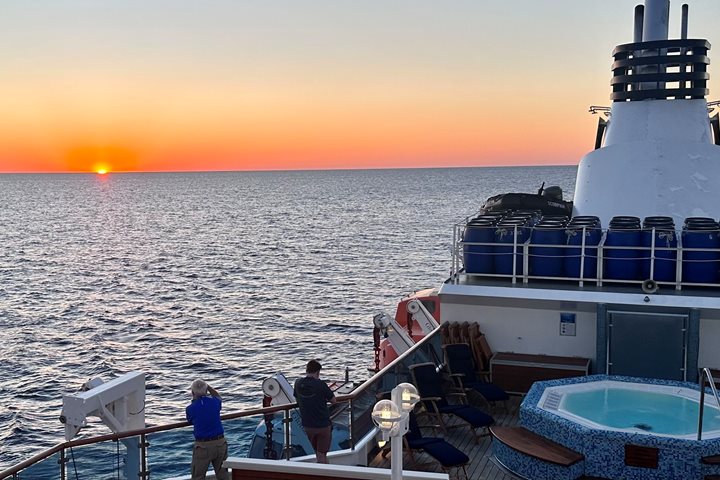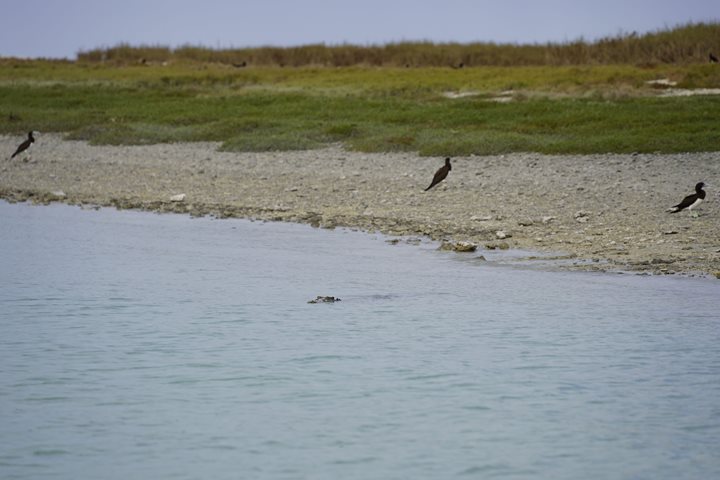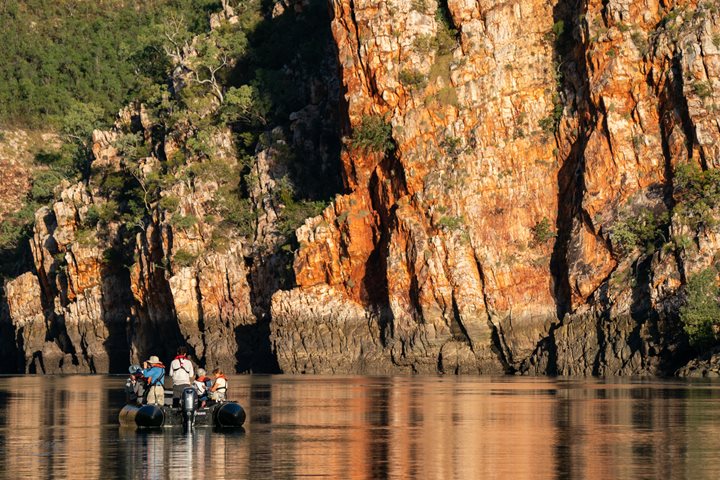Ancient rock art and World War II history were on the agenda today, but the real star of the show was the guided photography walk.
This morning we were all keen to go exploring the ancient Bradshaw Art sites on remote Jar Island. We walked, scrambled and climbed to three different galleries rich with rock art depicting human forms, mega fauna and ceremonial dress. Gwion Gwion rock art (as it is known to the local aboriginal people) form part of their creation stories and has long intrigued travelers and the scientific world. With Kimberley rock art research ongoing, our visit certainly brought up many questions on who, how and when, but the overwhelming feeling was of privilege to be able to come to such a special place and be able to see these ancient art works in person.
After a delicious lunch back on board the National Geographic Orion it was time for our afternoon adventure.
We have a passionate group of photographers on board and they were all keen to join our National Geographic photographer Jason Edwards for an afternoon of exploring and testing their newly found photographic skills. It’s amazing how interesting tidal flats and mangrove trees can be. We spent many happy hours with red and blue fiddler crabs darting in and out of their holes, tiny yellow crabs feeding in the mud and strange looking mud skippers flipping around on the surface looking for food.
Jason amused everyone by getting down and dirty in the mud and then coming away with the most inspiring images of eye bulging mud skippers and battling male fiddler crabs.
Some of our explorers walked over to the C-53 plane wreck that crashed near the tidal flats back in World War II. The old wreckage is in good condition and has a fascinating story.
It was a great day of culture, history and photography.







